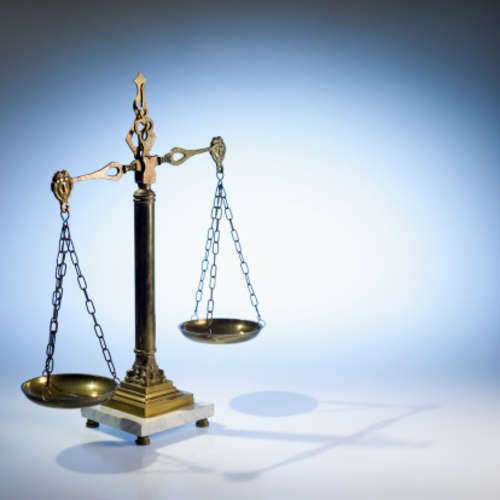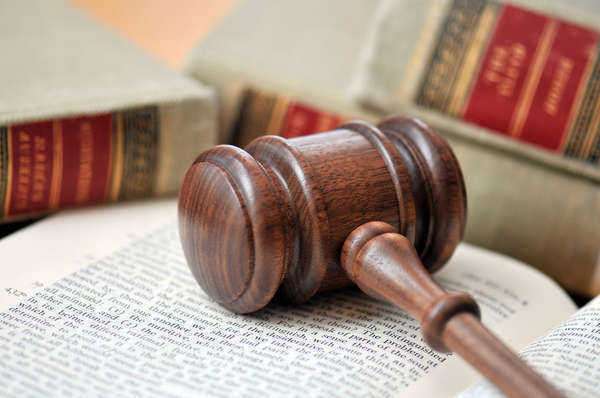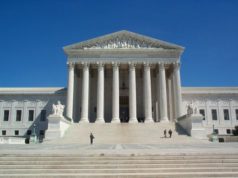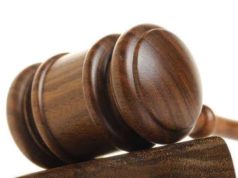Table of Contents

Introduction:
The United States Constitution outlines the three branches of government: the legislative, judicial, and executive powers. The concept of the separation of powers was developed to ensure that no one branch of government has too much power. The Supreme Court plays an essential role in enforcing this doctrine of separation of powers. This article will explore the Supreme Court’s interpretation of separation of powers and its impact on American government and politics.
Supreme Court Separation of Powers:
The Supreme Court has long been the arbiter of disputes between the three branches of government. It ensures the checks and balances work within the government by interpreting the Constitution and constitutional principles.
The Court’s interpretation of the separation of powers is derived from its role in constitutional interpretation, including the ability to interpret the Constitution’s text, historical context, original meaning, and social and political values. In the landmark case, Marbury v. Madison, Chief Justice John Marshall established the Supreme Court’s authority to interpret the Constitution. He stated that the Constitution is the supreme law of the land and that the Supreme Court has the final say on the law’s meaning and its application.
The Constitution provides a framework for the three branches of government to share powers, including checks and balances against one another. The Supreme Court’s role is to ensure that the branches of government remain in line with the Constitution, their respective roles, and the law.
Supreme Court Decisions on the Separation of Powers:
Several cases related to the separation of powers have been decided by the Supreme Court, covering topics such as executive privilege, legislative vetoes, the appointment and removal of executive officers, and the role of the judiciary in checking the other branches of government.
Executive Privilege:
Executive privilege refers to the power of the President and other executive branch officials to withhold information from Congress or the courts. The Supreme Court has weighed in on this issue in several cases. In United States v. Nixon, the Court unanimously held that executive privilege was not absolute and could not be used to withhold crucial evidence in a criminal trial.
Similarly, in the case of Clinton v. Jones, the Court held that a sitting president could not use executive privilege to avoid a civil lawsuit. The Court recognized the need to limit the President’s power to protect individuals’ rights and recognized the judiciary’s role in balancing the interests of all three branches of government.
Legislative Veto:
Another area the Supreme Court has addressed is the issue of legislative vetoes. A legislative veto is a provision that enables Congress, or one of its chambers, to nullify an action by another branch of government, such as the executive branch. In INS v. Chadha, the Supreme Court held that the legislative veto was unconstitutional, as it violated the principles of both bicameralism and the separation of powers.
The Court found that Congress could not delegate its legislative authority to a one-house legislative veto, as doing so undermined the Constitution’s requirement for bicameralism and made the exercise of legislative power by an individual chamber subject to the veto power of another.
Appointment and Removal of Executive Officers:
The Supreme Court has also weighed in on the President’s power to appoint and remove executive officers. In Morrison v. Olson, the Court upheld the constitutionality of the Independent Counsel statute, which allowed the appointment of an independent counsel to investigate and prosecute high-ranking officials.
The Court determined that the statute’s appointment clause did not violate the Constitution’s separation of powers principles, finding that there were enough executive checks and balances to ensure the independent counsel’s accountability. In contrast, in Free Enterprise Fund, v. Public Company Accounting Oversight Board, the Court struck down as unconstitutional the provision that restricted the President’s ability to remove board members without cause, finding it undermined the President’s ability to exercise his constitutional power to supervise the executive branch.
Role of the Judiciary:
The Supreme Court has also interpreted its role in checking the other branches of government. In Marbury v. Madison, the Court established its role in constitutional interpretation, stating that the Constitution is the supreme law of the land, and the Court has the ultimate authority to interpret the Constitution.
The Court has also held that it has the power of judicial review, enabling it to declare governmental actions, including those by Congress and the President, unconstitutional. However, such power comes with responsibilities. In Youngstown Sheet & Tube Co. v. Sawyer, the Court held that the President’s power as Commander-in-Chief did not include the ability to seize private property without Congressional approval, declaring President Truman’s actions as unconstitutional.
Conclusion:
The Supreme Court is essential in enforcing the separation of powers principles outlined in the Constitution. It maintains the balance of power by interpreting the Constitution and ensuring the three branches of government stay within their designated spheres of authority. The Court’s decisions on issues such as executive privilege, legislative vetoes, appointment and removal of executive officers, and the role of the judiciary in checking the other branches of government continue to shape American government and politics. The principles of the separation of powers doctrine remain an essential part of American governance, reflecting the Constitution’s intention to prevent tyranny and ensure a functioning democracy.
As set forth by the United States Constitution, branches of Government have been held separate from each other so as to ensure that no one branch may overtake the others in pursuit of some abuse of overall power. The Government branches that fall under this “separation of powers” include the executive, legislative, and judicial sectors. These branches of Government each have prescribed levels of power has set forth by the Constitution.
In relation to the executive domain of these Government branches, though presidents are granted power to oversee command of military forces as well as the ability to ensure that laws are passed as well as treaties set forth, they do not actually possess absolute power. When referencing the military, the President may place those duties onto other individuals who may devote all their time to such endeavors as the military interest. In addition, Congress may dispute any presidential decisions. Therefore, the President, though possessing certain powers, must actually also adhere to the direction set forth by Congress, which may override decisions made by the Commander in Chief.
The category of Government branches that Congress resides within is that of the legislative branch. Legislative power is totally within the realm of Congress, as Congress assumes exclusive authority in terms of legislation. It may not, under any circumstances, “delegate” its powers to any other branch of Government. This was reiterated in Clinton v. City of New York, where the Supreme Court stated that Congress is not permitted to delegate a “line-item” to the country’s President. According to such power Congress attempted to delegate, the President would have the authority to abolish provisions of a bill prior to inputting his signature upon it.
The third member of these branches of Government, the judicial branch, maintains that the Supreme Court, as well as other smaller State and district courts, possess authority over cases brought forth for decision to the court system. The Justices of the Supreme Court are appointed by the President with the support of the Senate. Upon appointment as a Supreme Court Justice, you will remain in that position for as long as you may physically and mentally able to.
In order to ensure the prevention of such abuse of powers by these branches of Government, a system of checks and balances exists. This system allows each branch the power to limit the other, thus allowing self-regulation among the 3 branches of Government. The legislative branch may compose and enact laws while the executive branch may veto laws. The judicial branch has the power to provide determination as to whether or not a law is unconstitutional.
It is a constant checking and rechecking of the acts of each branch that occurs. One criticism of the separation of powers, in terms of branches of Government, includes that it may lead to a less efficient governing process. This is due to the fact that elections bring about constant changes in majority parties within the branches of Government.


























